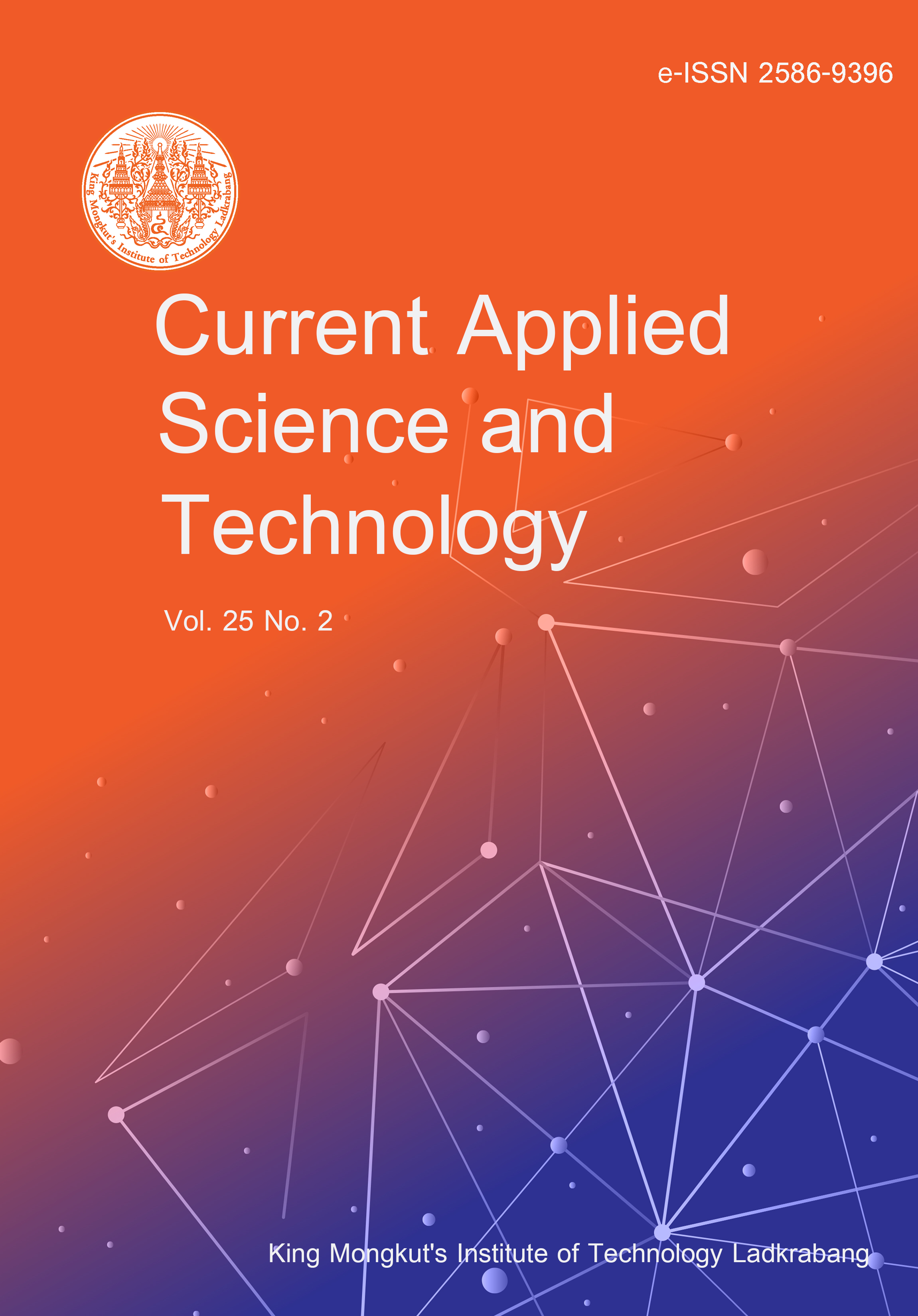In this project, we explored how different oxygen flow rates influenced the creation of TiO2 nanostructures in thin films using magnetron sputtering preparation with oblique angle deposition (OAD) technique. The experiment involved oxygen flow rates of 20, 40, 60, 80 and 100 sccm along with a constant argon flow at 20 sccm. Morphological analysis by FE-SEM was performed to determine film thickness and deposition rate. In a subsequent stage, thin films thickness was confirmed to be 100 nm. After coating, specimens were annealed at 300°C for 2 h using various O2 flow rates. FE-SEM revealed morphological changes, GIXRD to explore crystal structures, and UV-Vis spectrophotometry to measure light transmittance. The results showed an optimal oxygen flow rate at 60 sccm, with annealed specimens exhibiting anatase structure and promising light transmittance of 73-83%.
Koetniyom, W. ., Somboonsaksri, P. ., Patthanasettakul, V. undefined. ., & Limwichean, S. undefined. . (2024). The Effect of O2 Flow Rate on Nanostructured TiO2 Thin Films Prepared by Reactive DC Magnetron Sputtering with OAD Technique. CURRENT APPLIED SCIENCE AND TECHNOLOGY, e0261577. https://doi.org/10.55003/cast.2024.261577

